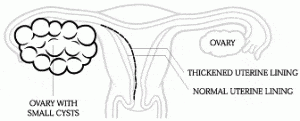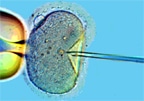Contributed by Naveed Khan, M.D.

Washington, D.C. and its surrounding suburbs are an incredibly culturally diverse region of the country. People reside in this region from literally all corners of the world. In particular, one of the communities that I see a lot of patients from are people from the Indian subcontinent. I was curious if infertility rates were higher here in the United States for people of Indian origin compared to back in India. After some research, what I found out was very interesting.
Infertility in India Compared to Infertility in the United States
The general rate of infertility in the United States is 10% for reproductive-aged couples. This is the same rate of infertility found in India.1 The population of the United States is 320 million people, while India is significantly more populated with a population of 1.3 billion. This would mean that there are four times as many infertility patients in India compared to the United States! The most common causes of infertility in India are sperm abnormalities leading to male factor infertility, and in women, a hormone condition called polycystic ovary syndrome.2 The most common causes of infertility in the United States are very similar, including the diagnoses of male factor infertility, polycystic ovary syndrome, endometriosis, and unexplained infertility.
Similar to the trend that has already occurred in the United States, the rise of infertility in the Indian population involves many factors, including changes in lifestyle, stress, and the recent trend of delaying marriage. The Indian National Family Health Survey found that infertility rates were highest in women living in urban areas; with increasing levels of education among women, infertility rates also increased.3 In the United States, some reasons cited for delaying pregnancy were related to careers and improvements in contraception. The common denominator is that in both countries, women are attempting pregnancy at older ages when women are less biologically fertile.
One of the biggest differences for men and women attempting to access infertility treatment in the United States compared to India is that in the United States, fertility centers report their pregnancy and outcome rates to the Centers for Disease Control and Prevention (CDC) and the Society of Assisted Reproductive Technologies (SART). SART’s mission is to maintain and set standards for IVF centers across the country. Within one database, a patient is able to objectively compare pregnancy rates from one center to another. While there are more fertility centers in India–3,000 compared to 450 centers in the United States–India has no equivalent regulatory body to compare results between centers.4 In India, there is only the self-reported pregnancy rates put out by each individual center, making it difficult to verify and standardize the data and compare pregnancy rates across centers.
Infertility Diagnosis & Treatment

At Shady Grove Fertility, our success working with Indian patients that are local or international is excellent. Culturally, there is a very strong emphasis on family and children, and as a result, patients I have seen tend to be well-educated about their fertility and motivated to take the steps needed to build their family. The most common diagnoses that we see in our practice in couples that are Asian Indians are polycystic ovary syndrome and male factor infertility.
In both cases, we have the experience
needed to correctly diagnose and recommend effective treatment. Polycystic ovary syndrome has a spectrum of symptoms that sometimes can make it difficult to diagnose, especially in the early stages. As a result, women with polycystic ovary syndrome sometimes get misdiagnosed or incur a significant delay in diagnosis if they are seeing someone who is not experienced with this condition. Once we make the diagnosis, treatment is directed accordingly and tends to be highly effective whether it is low-tech or high-tech therapy that is needed.

For patients with male factor infertility, we have many treatments that are available. One of the most revolutionary treatments is intracytoplasmic sperm injection (ICSI), which is performed in conjunction with in vitro fertilization (IVF). ICSI is an infertility treatment in which one sperm is injected directly into an egg. Since only one healthy sperm is needed to perform ICSI, this treatment is incredibly useful for when there is a problem with the sperm, such as low motility (movement) or a low sperm count. ICSI can also be useful in cases where the sperm cannot penetrate the egg or if the sperm are abnormally shaped.
Coming to Shady Grove Fertility for Treatment
As part of the largest fertility center in the United States, our SGF reproductive endocrinology team has the breadth and depth of experience that comes with treating tens of thousands of patients. We know the most cutting-edge treatment techniques and can provide patients with an individualized treatment plan that will help put them on the path to parenthood.
If you would like to learn more about fertility treatment, or would like to schedule an appointment, please contact the New Patient Center at 877-971-7755.
References:
1) Mahesh, Roshni. Infertility Rate among Indian Couples on the Rise, Says Survey. Sept 20, 2013.
2) Express News Service. Male and Female Infertility Just Keeps on “rising”. Jan 27, 2014. The new Indian Express.
3) Ganguly, S., Unisa, S. Trends of Infertility and Childlessness in India: Findings from National Fertility Health Survey Data. F,V&V in ObGyn, 2010, 2 (2): 131-138.
4) Bhalla, B., Thapliyal, M. Inside a “baby-making factory”: How the rent-a womb industry became India’s latest booming industry. com, Septermber 30, 2013.





